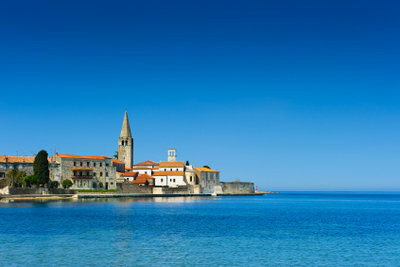Does Croatia have federal states?
Croatia is rightly being discovered more and more by many holidaymakers as a travel destination. The beautiful country on the Adriatic coast enchants with the most diverse landscape regions and its Mediterranean climate. From a political point of view, Croatia is striving towards the European Union and will officially be considered a part of it in 2013. Historically, the country reflects traditions that are already evident in the division of the regions. Croatia does not have federal states, but counties.

Croatia is definitely worth a trip
- Understanding Croatia means thinking internationally, because the population is made up of Croats, Slovenes, Serbs, Czechs, Bosniaks, Roma, Italians, Montenegrins, Hungarians, Slovaks, Albanians, Macedonians, Russians and some Germans together. In this respect, it is understandable that the standard Croatian language is not only interspersed with countless dialects, but also has a corresponding number of different mother tongues.
- The "Republika Hrvatska", as Croatia is called, is located on the east coast of the Adriatic Sea, Slovenia borders to the northwest. If you follow this northern border further east, you will find Hungary and then, with a negligibly small border strip, the autonomous province of Voivodina. Further, along the north-eastern border, Serbia and subsequently Montenegro join. Interestingly, there is no direct route to the southernmost part of the country, the former Republic of Ragusa Land connection, because the wide access to the sea pushes itself in between, making the area an exclave forms.
- Croatia and its counties cover around 56,500 square meters of land. Croatian counties are equivalent to what you get in Germany States. As a rule, the country of Southeast Europe or assigned to the Balkan Peninsula, but due to the cultural spatial definition of Europe, it is officially delimited to Central Europe. Part of the population is very happy with this classification in order to differentiate itself from the negatively occupied “Balkan crisis region”.
- Croatia's landscape is divided into three different relief and climatic zones: the Pannonian lowlands, the Dinaric mountain region and the Adriatic coastal areas. The lowlands of the Pannonian lowlands are only interrupted by a few low mountain ranges and rivers. The Drau and Save drain the land to the Danube. The Croatian hill country, with its low and high mountains, characterizes the Dinaric mountain region, which stretches between the Adriatic and the Danube. Along the Adriatic coast, the country is characterized by surface and underground terrain and a Mediterranean climate.
There are no "federal states" in Croatia
- Croatia looks back on a long history. And 12. Century BC BC) the first people settled on the east coast of the Adriatic Sea, opposite the Italian boot. Until the Byzantine Empire (550-1270), the country's affiliation changed until it was finally ruled from Constantinople. Around 910 AD Tomislav took the first Croatian royal dignity in Zagreb. It is to be assumed that around this time the name "Croatia" derives from Persian root established.
Parenzana cycle path - interesting facts about the path to health
In Croatia, people still remember the former Parenzana railway line. …
- The Croatian general "Nikola Subic Zrinski" led Croatia towards a true heyday around 1059, because under the ruler King Petar Kresimir IV was reformed Croatia in connection with the Roman Church, resulting in allegiance to Rome was meaningful. The oriental schism (union negotiations in 1054 between the Roman Catholic and the Orthodox Church) partially split the inland Religions. Most of the Croatian population, however, belongs to the Roman Catholic faith.
- Between 1102 and 1526, Croatia remained deeply rooted in Hungary through the Hungarian-Croatian King Koloman. Since the middle of the 15th In the 19th century wars against the Ottoman Empire changed the structures and Croatia and part of Hungary fell to the Habsburgs. It wasn't until the middle of the 19th Century (1848) the population demanded their self-determination rights. It was not until the end of the First World War in 1918 that Croatia broke away from Austro-Hungarian rule. The Croatians demanded a republic and the dissolution of the Kingdom of Serbia, Croatia and Slovenia, which was planned in 1918. After much political turmoil, Croatia has been an independent state since 1991 and was elected to the UN Security Council in 2007.
- Croatia's internal state administration is under the government, whose ministers are responsible for the intermediate administrative authorities. The lower administrative authorities are responsible for the respective counties. Counties in Germany would rather be called federal states and deal with the areas of responsibility of individual state districts. Local self-government is based on 426 municipalities, 124 cities and 20 counties (federal states). The term “Gespan” is derived from the historical-Slavic-Hungarian and means “chief”. Counties are regional administrative districts.
How helpful do you find this article?

